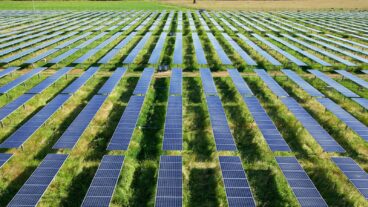A recently published Tel Aviv University (TAU) research study alleges the decrease in the number of thunderstorms in some areas of the world may be due to the process of deforestation.
Deforestation is the loss forested areas due to the expansion of agriculture, urbanization and other human activity. It is said to negatively impact natural ecosystems, biodiversity and the climate.
The first-of-its-kind study was conducted using information from the Amazon basin in South America, which has been going through rapid deforestation since 1990. It sought to track the changes in the frequency of thunderstorms in the area in recent decades.
The results of the study were published in the Quarterly Journal of the Royal Meteorological Society (QJRMS).
According to the scientists, most areas of the world have seen an increase in the number of thunderstorms. However, areas with accelerated deforestation processes have recorded a drop in rainstorms.
The lack of rain contributes further to the deforestation phenomenon and disturbs the vital process of photosynthesis, creating a vicious cycle.

Not having enough thunderstorm data from the Amazon, the researchers built an empirical model based on climatic parameters from the European Center ERA5, which has collected data on global climate since 1940.
They also used the thunderstorm information collected through a worldwide network of lightning detection sensors called the Worldwide Lightning Location Network (WWLLN).
The researchers discovered an eight percent decrease in the frequency of thunderstorms in the Amazon basin over the past 40 years. Most of the decrease was observed in areas where the rainforests were replaced by agriculture or other human activity.
The research was led by Prof. Colin Price and graduate student Raam Beckenshtein from the Department of Geophysics at the Porter School of the Environment and Earth Sciences at TAU.
“This decrease can be explained by the fact that the absence of the forests significantly reduced the moisture in the air, which is the source of energy and moisture needed for the formation of thunderstorms,” Price said.
“The result is fewer thunderstorms, fewer clouds, less rain, and consequently less growth of the forest. This creates a dangerous feedback loop that can cause the forests to dry out and significantly reduce the vital contribution of the ‘Lungs of the Earth’ to oxygen production and carbon dioxide absorption.”

















